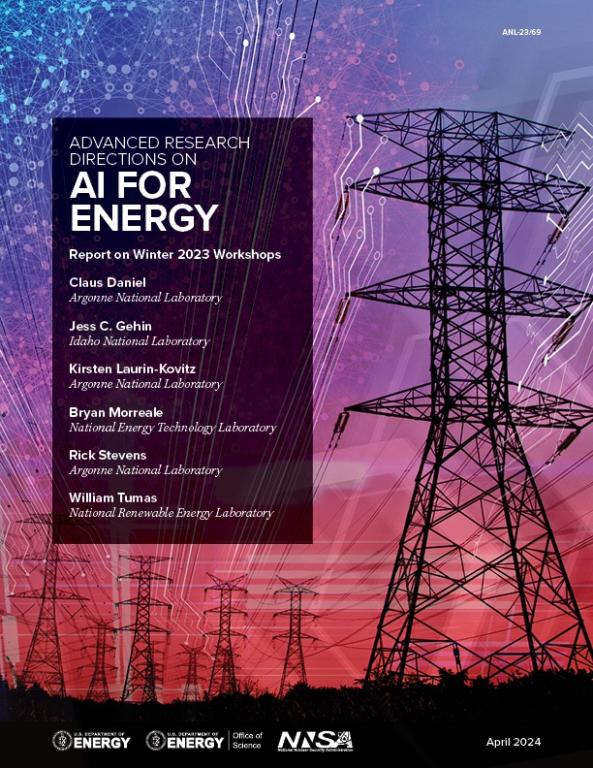Groundbreaking report provides ambitious framework for accelerating clean energy deployment while minimizing risks and costs in the face of climate change

In the face of accelerating climate change, the U.S. aims to reduce the net carbon emissions of its economy to zero by 2050. Achieving this goal will require an unprecedented deployment of clean energy technologies, and a significant transformation of the nation’s energy infrastructure.
It is an exceptionally complex and daunting challenge. But it is not impossible if we harness the transformative capabilities of artificial intelligence, or AI, to help.
This is according to a groundbreaking new report issued by leading energy researchers and scientists from across America’s national laboratories. The report is titled “AI for Energy.” It provides a bold framework for how the U.S. Department of Energy can use AI to accelerate the nation’s clean energy transformation.
“AI, with its unparalleled ability to analyze vast datasets and uncover complex patterns, coupled with the immense computational power of exascale systems such as the Frontier exascale supercomputer, is revolutionizing how we approach the nation’s energy challenges,” said Gina Tourassi, associate laboratory director for computing and computational sciences at Oak Ridge National Laboratory. “From optimizing energy production and distribution to enhancing renewable energy sources and mitigating environmental impact, this synergy is propelling our nation forward on its mission towards a sustainable and resilient energy landscape.”
The report identifies grand challenges across five areas of the U.S. energy infrastructure. These include nuclear power, the power grid, carbon management, energy storage and energy materials. Three common needs emerged across these challenges. The first is the need for quick and highly reliable computer-aided design and testing of materials and systems. The second is the need to improve scientists’ ability to pinpoint uncertainties in their predictions and how systems will perform. The third is the need for AI to integrate data from multiple sources and formats.
If the U.S. can overcome these challenges, the benefits could be significant.
Approximately 100 experts from the fields of AI, machine learning and energy met at Argonne National Laboratory outside Chicago for two days in December 2023. Their goal was to map out how best to use AI to solve U.S. energy challenges. Attendees then worked together for three months to create the report.
The report was produced by Argonne and DOE’s Idaho National Laboratory, National Renewable Energy Laboratory and National Energy Technology Laboratory. Additional key contributors included DOE’s Brookhaven National Laboratory, Lawrence Berkeley National Laboratory, Lawrence Livermore National Laboratory, Los Alamos National Laboratory, Oak Ridge National Laboratory, Pacific Northwest National Laboratory, and Sandia National Laboratory.
“To accelerate the development and adoption of clean energy technologies, it is essential to develop AI solutions that are safe, secure, trustworthy and energy-efficient,” said ORNL’s Director of AI Programs Prasanna Balaprakash. “We must prioritize the creation of robust and reliable AI systems that incorporate comprehensive security measures and algorithms that are both interpretable and accountable. This timely DOE report outlines the need for developing advanced AI technologies for clean energy to ensure responsible advancement and support a sustainable energy infrastructure, facilitating equitable and accessible deployment.”
UT-Battelle manages ORNL for DOE’s Office of Science, the single largest supporter of basic research in the physical sciences in the United States. DOE’s Office of Science is working to address some of the most pressing challenges of our time. For more information, visit energy.gov/science.
You can read the entire AI for Energy report here.
This story originally appeared on Argonne National Laboratory's website.



